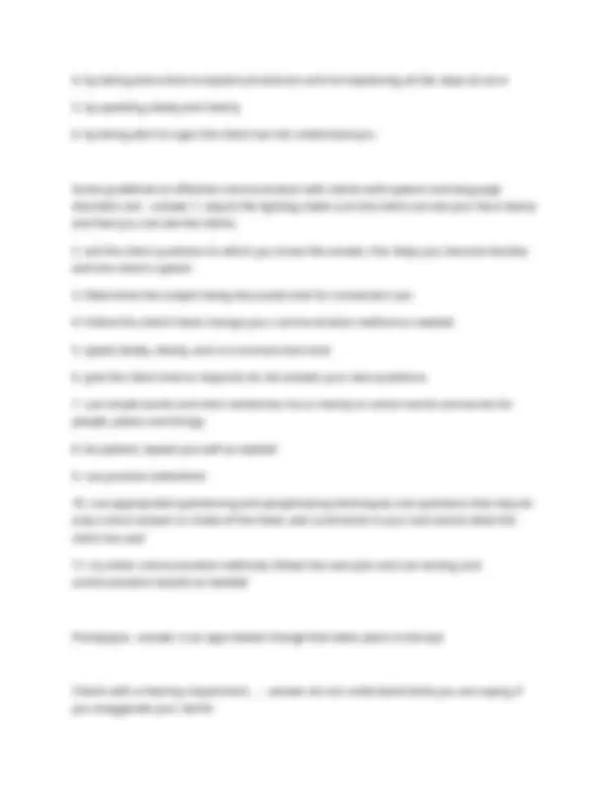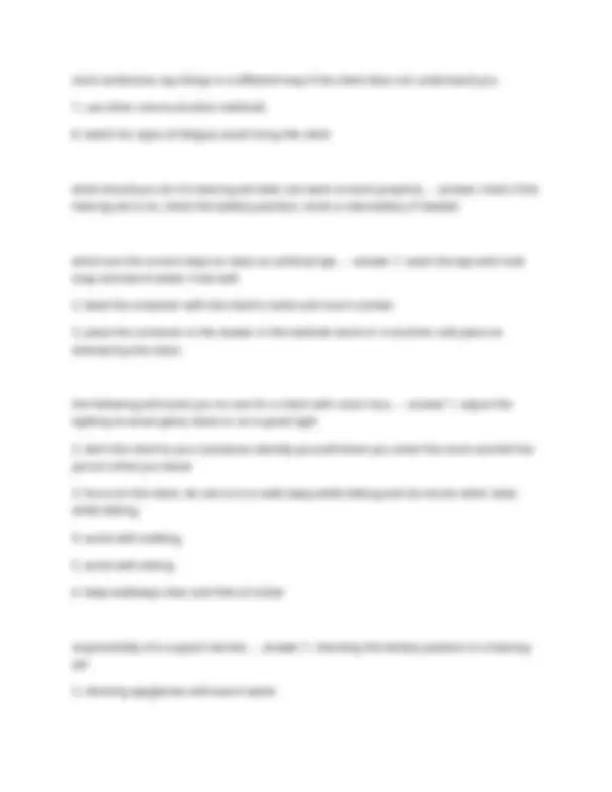









Study with the several resources on Docsity

Earn points by helping other students or get them with a premium plan


Prepare for your exams
Study with the several resources on Docsity

Earn points to download
Earn points by helping other students or get them with a premium plan
Community
Ask the community for help and clear up your study doubts
Discover the best universities in your country according to Docsity users
Free resources
Download our free guides on studying techniques, anxiety management strategies, and thesis advice from Docsity tutors
Developmental Disabilities Exam Questions And Complete Answers.
Typology: Exams
1 / 13

This page cannot be seen from the preview
Don't miss anything!








People with a mild intellectual disability... - answer are slow to learn in school. People with developmental disabilities... - answer have sexual urges. All people with a developmental disability do not have... - answer the same amount of impairment. Down Syndrome causes... - answer some degree of intellectual disability in all affected people. Cerebral palsy doesn't... - answer result from brain damage that occurs during birth. Spastic cerebral palsy does not affect... - answer posture, balance, and movement. Autism begins... - answer in early childhood. Autism can not... - answer be cured with appropriate therapies. Children with myelomeningocele... - answer may learn to walk using braces or crutches. If a child has hydrocephalus... - answer intellectual disabilities and neurological damage will occur without treatment. If a mother develops rubella (German measles)... - answer during pregnancy, the baby may have an intellectual disability. Shaking a baby... - answer can cause intellectual disability. Kinds of developmental disabilities: - answer 1. Intellectual disabilities
Causes of intellectual disability: - answer 1. Abnormal genes inherited from one or both parents
a client with autism spectrum disorder may... - answer show little reaction to pain. Spina bifida cystica - answer part of the spinal column is contained in a sac. Meningocele - answer Spinal cord and nerves are usually normal; corrected with surgery Spina bifida occulta - answer defect in vertebrae closure but cannot be seen on outside of body Myelomeningecele - answer Pouch contains nerves and spinal cord; loss of function. Spastic - answer Movement is stiff and jerky, affecting one or both sides of the body. Athetoid - answer Movement is involuntary and involves constant, slow weaving or withering motions in the trunk, arms, hands, legs, and feet. Ataxic - answer Muscle tone is weak, and coordinating movement is difficult. Most older adults... - answer do not have apraxia. Some people with aphasia... - answer cannot understand the message. People with expressive aphasia... - answer are aware of their mistakes when speaking.
Basic types of aphasia and there meanings... - answer 1. Receptive aphasia: difficulty understanding written or spoken words
short sentences; say things in a different way if the client does not understand you
Expressive- Receptive Aphasia - answer difficulty speaking and understanding language (also known as global aphasia)